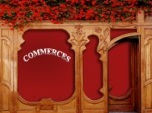L' histoire de Metz et de la Lorraine, histoire de la moselle - cartes postales anciennes de Metz - cartes postales anciennes de Moselle - histoire Moselle

Between the rue Fabert and the rue de Ladoucette
FORMER NAMES
-in 1137, 1609, 1698:
place Saint-Jacques
-in 1698 and in 1773:
place Derrière Saint-Sauveur
-in 1793:
place de la Révolution, then place de la République
-in 1806-1815:
place d'Austerlitz
-in 1816-1830:
place Saint-Jacques
HISTORY
In those days, it used to be just a small square before the church it bore the name of. Meurisse, in his work entitled Histoire des Evêques de Metz (History of the Bishops of Metz), explains that, in 1137, Etienne, bishop of Metz, gave the chapter of the Collégiale de Saint Sauveur (Saint Sauveur Collegiate Church) the Saint-Jacques church, located on the square of the same name. The Benedictine historians, the authors of the Histoire générale de Metz (General History of Metz), recount in these words the origins of the current square:
In 1574, the Saint-Jacques church, which was contiguous to the Collégiale de Saint-Sauveur, and in which the canons had withdrawn after the demolition of the latter to do the Divine Service, was demolished as well to form the square known today by the name of Saint-Jacques.
In 1610, a monumental fountain was built in the centre of the square; it represented a large pond, from which, on a pedestal, Saint-Jacquess statue raised.
It has been occupied by a market for long: in 1710, hemp would also be sold there. In 1730, the herbariums were temporarily sent to the place de Chambre. In 1769, the market of the place Saint-Jacques was temporarily moved to the place de la Comédie.
In 1832, a vegetable covered-market was set up there; by digging in the soil in order to set up cellars in it, people excavated masonries of roman origin and vestiges of the old Saint-Jacques church. The vegetable covered-market was demolished in 1908. In 1910, an anonymous inhabitant of Metz donated 10 000 marks to the city administration for the construction of a monumental fountain on the place Saint Jacques.
Consequently to a wish expressed during the 1914-1918 War, a statue of the Virgin Mary was raised on this square. This monument, Jacques Martins work, is eight meter tall; it was unveiled on August 15th 1924.
The municipal by-law of January 18th 1806 concerned in the same time the denomination of the place dArmes. Here is its content: the mayor of the city of Metz,
who adds to his dearest duties the care to perpetuate the memory of the immortal victories through which his Majesty the Emperor and King, Napoléon-le-Grand toujours auguste, decided of the fate of Europe, took his army to the highest level of glory, and put his people in the first rank of nations, given that a great number of citizens expressed the wish to see the erection of a monument, which would be worthy of the great and memorable events of the sixty-days war, and to see the main squares decorated with the trophies of the Great Army, considering that the first of these propositions is of the responsibility of the General Council, who, during its first session, will hasten, on this opportunity, to bring his wishes to the feet of the throne of His Imperial and Royal Majesty, decrees:
Art. 1: The place dArmes and the place Saint-Jacques of the city of Metz will be respectively named: place Napoléon and place dAusterlitz.
Art. 2: The ancient inscriptions will be erased in the day: they will be replaced with laurel and olive crowns, in the middle of which the new inscriptions will be written in really visible letters. The Mayor, MARCHANT.
In 1816, a decision signed by Mr de Turmel, the intendant, gave the square back its former name. The by-law of August 8th 1830, which gave it back the name of Austerlitz, bears the signature of Mr Bouchotte.
In the 13th century, the ruelle des Barons (it is a small street) ended up behind Saint-Sauveur. Its name came in all likelihood from Gérard Baron, a canon of Saint-Sauveur.



